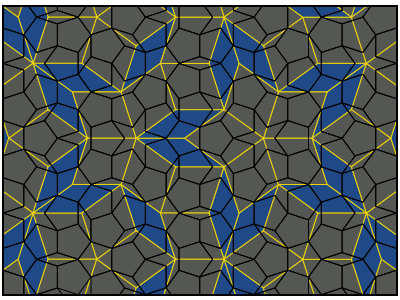Ultimately, how you choose to lead your startup in the post-2022 Tight Money Era depends on what lessons you’re taking away from the 2018-2022 Loose Money Era, and where you’re at on your own leadership journey. In this post, I’ll describe where my stance is at the end of 2022 with respect to a systemized study of new venturing knowledge. How We Got Here: The Loose Money Era Money was cheap between 2018 and 2022 [1]. Stupidly cheap. You know how I know money was cheap? Check the links: Intensely. Stupidly. Insanely. Idiotic. Terribly. Sweatily. Moronicly. Cheap. Cheap money enables radical conservation of thought. (I’m picking on scooters because it’s physically obvious, but there’s plenty of incredibly silly things going[…]
Category: Culture
You only have so much attention. When you consume media, roughly 27% to 30% of your attention can be directly monetized, and there’s perhaps a tolerance for another 15% that can be wrung out with product placement. As a result, Time Spent is an attractive metric for those who create and monetize attention. For example, if you can attract 1,000,000 hours of attention, then you can monetize 300,000 to 450,000 hours of it. In theory, the amount you can charge for your attention depends on the value advertisers place on the audiences’ attention. And that depends on who they think you are, how susceptible you are, how much you spend in the relevant category, how causal the purchase decision is[…]
Why is it easier for an individual to identify a valuable problem and solve it in a startup than it is in a business? Will be the same in most Decentralized Autonomous Organizations (DAO)? In this post, I’ll argue that information is a key enabler that makes it all the easier for an individual to identify and solve valuable problems. If we’re in the age of information, then why does information seem so scarce? The reasons for information scarcity are many and emergent, including status-quo preservation and self-identity protection. To understand the resistance to solving a valuable problem, it’s useful to think of Lock-In [1] and to mark the distinctions between startups, businesses and DAO’s. A startup is not a[…]
If a quality attribute is an adjective describing something, and an organization is a set of people segmented by purpose, then what kind of quality attributes could be used to describe an organization? A good place to begin is with a segmentation of purposes. What is the purpose of the organization? I am bathed in neoliberalism. You might even say that I have been marinated in it. Pickled. The first segmentation that comes to mind each contain the term profit. There are for-profit organizations, non-profits, and not-for-profits. Profit-as-a-Purpose predisposes an organization whole range of quality attributes. Non-profits and not-for-profits are predisposed to another set of quality attributes. Profit motive offers one cleavage for segmentation. It’s obvious because it’s the neoliberal thing to[…]
What you believe has a lot to do with who you believe. Who you believe, and who you don’t, can be represented as a network. Networks cause and reinforce trust. In this post, I’m going to try to make the connection between trust, society, and the delta variant of COVID. As I begin writing this post on July 20, 2021, I know about Delta Variant. We know that it’s burning through large populations of unvaccinated people. I think most people see it coming. And as the days passed, I watched increasing anxiety about what is to come. As a I publish this on August 1, there still isn’t much evidence of a mass urgency to vaccinate. So why the inaction?[…]
The Canadian state has had an interesting relationship with networks since the beginning. Networks connect things and enable outcomes. Those who direct and influence the State have preferences for what those outcomes should be. To understand how the state is grappling with the consequences of social networks, it might be useful to look at how it has grappled with physical networks. We’ll begin with some basic theory about the Canadian State. Canada is made of citizens. Some of those citizens become leaders. Those leaders try to create some explainable representation of society’s optimal social welfare function, and package it into something people can recognize, understand and vote for. They do that because they need the consent of the citizens in[…]
Maybe you should read Thomas Kuhn’s The Structure of Scientific Revolutions. Maybe you shouldn’t. Here’s a little bit of information to make up your own mind. When I use the word paradigm, I mean it in the Kuhnian sense. I don’t use it as a hyperbole or superlative. I don’t look at a new ice cream brand extension and breathlessly declare that it’s a paradigm shift in desert delivery. Paradigm shouldn’t be a buzzword. Kuhn defined a scientific paradigm as a set of evidence, experiments, achievements and observations that are universally recognized, that provide a set of problems and solutions that are worthy of a communities’ focus. Communities are very particular about what they consider to be knowledge and what[…]
Everybody experienced 2020 in a different way. I offer one perspective. I limped into January from 2019. It was a tough year in that it was tougher than 2018 and 2017. Tough for a few reasons. It was a stretch year. Technology was causing discomfort but not change. Social systems struggled. It was a stretch year for leadership development. After testing dozens of heuristics (rules of thumb), I was in the process of adopting a half dozen. They’d serve me well in 2020. January January was to be a month of consolidating the learning and incorporating the learnings deep into the heart and mind. I chose to dream in Hawaii. And it worked. I experienced sleep that was deep and[…]
2020 hasn’t been easy. Figures from the US Census Household Pulse Survey can be used to tell a story of anxiety, hunger, depression, desperation and hopelessness. Millions are hurting. 2020 is hitting the poor, the young, and those who are low to mid-skilled the hardest. 2021 isn’t looking easy. Vaccines will take time to rollout. The recovery depends on collective health security. Health security causes confidence, confidence causes increased risk tolerance, increased risk tolerance leads to investment, and investment stimulates growth in private sector productivity, labour market demand, and opportunity. It will take time for each part of the chain to develop. It all lags. A return to the previous trend line doesn’t address the underlining cause of wage polarization.[…]
Software agility is not business agility (Klaus, 2018). If that sounds true to you, then the rest of this post should be a fun read. If it is not, this may be challenging. It could still be a fun read. Software Agility The collection of knowledge called Agile Methods, as applied to developing valuable software, is deep and broad. Much of the variance both within communities and across communities is caused by the ambiguities in their experiences and where they’re at in their personal and leadership development. There are good reasons for the distinctions among the different forms of Agile. The Universe is whatever you say it is, so just say. Business, Busyness, Problems Have you ever participated in a[…]









